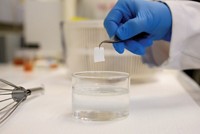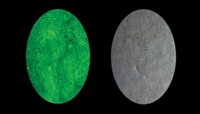Advertisement
Grab your lab coat. Let's get started
Welcome!
Welcome!
Create an account below to get 6 C&EN articles per month, receive newsletters and more - all free.
It seems this is your first time logging in online. Please enter the following information to continue.
As an ACS member you automatically get access to this site. All we need is few more details to create your reading experience.
Not you? Sign in with a different account.
Not you? Sign in with a different account.
ERROR 1
ERROR 1
ERROR 2
ERROR 2
ERROR 2
ERROR 2
ERROR 2
Password and Confirm password must match.
If you have an ACS member number, please enter it here so we can link this account to your membership. (optional)
ERROR 2
ACS values your privacy. By submitting your information, you are gaining access to C&EN and subscribing to our weekly newsletter. We use the information you provide to make your reading experience better, and we will never sell your data to third party members.
Analytical Chemistry
Detecting Fingerprints with Lawsone
July 14, 2008
| A version of this story appeared in
Volume 86, Issue 28

The law enforcement community is constantly looking for more sensitive techniques to sleuth out fingerprint evidence for criminal investigations. Simon W. Lewis of Curtin University of Technology, in Australia, and colleagues report that lawsone can reveal fingerprints left on paper, opening up a new class of potential detection analogs (Chem. Commun., DOI: 10.1039/b808424f). Lawsone gives henna its characteristic property for dying hair and skin reddish brown. The compound reacts with amino acids in fingerprint residues, leaving colored ridges that fluoresce at longer wavelengths than established reagents, so lawsone might help reveal details not visible to the naked eye or on surfaces where other reagents fail. Ninhydrin, the classic fingerprint reagent sensitive to amino acid residues, is still widely used on porous surfaces, but it does not fluoresce without special treatments. Jan Zonjee, a research chemist at forensic supplier BVDA International, says lawsone is not ready to replace ninhydrin, but a derivative or analog might become the reagent of choice in the future or especially good for a niche application, such as developing fingerprints on colored papers.





Join the conversation
Contact the reporter
Submit a Letter to the Editor for publication
Engage with us on Twitter